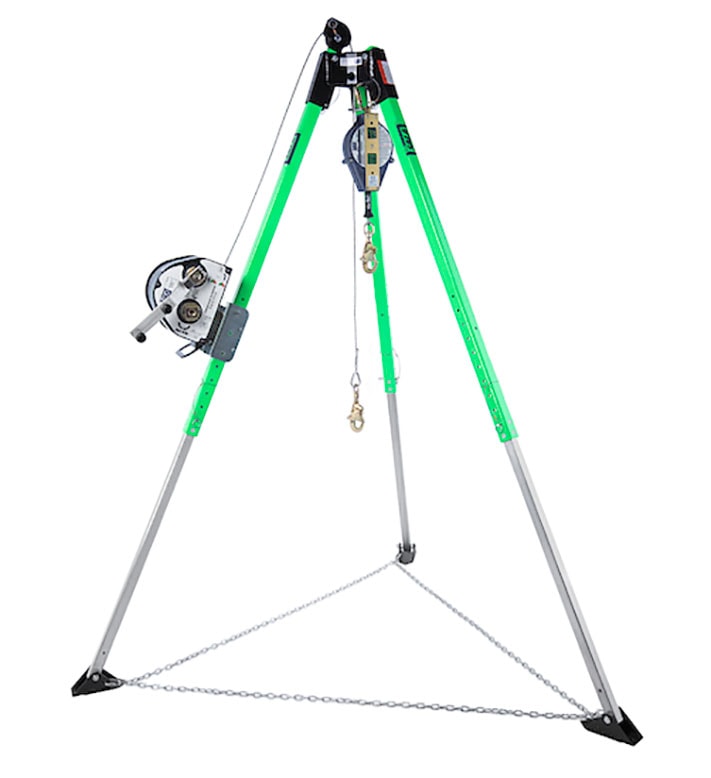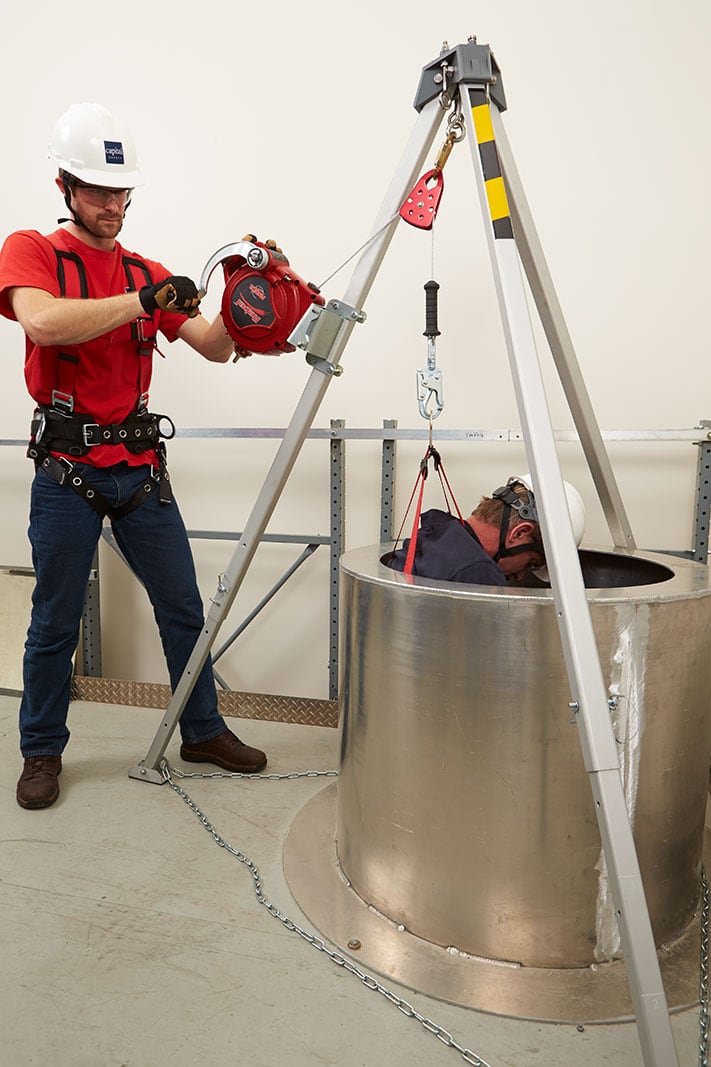Tripod Systems for Confined Space and Rescue Applications
Light weight and portable, tripod systems can be combined with pulleys to accommodate a variety of winches and fall arrest devices for a wide range of confined space entry/retrieval and rescue applications. Whether you require a tripod system to access a confined space at your facility, or an accident requires the extraction of incapacitated personnel, versatility and ease of use make portable tripod systems an ideal solution for many confined space and rescue applications.

Tripod Systems

Tripod Systems
Applications
-
Refinery Fall Protection
View Refinery Fall Protection -
Landfill Fall Protection
-
Water Treatment
View Water Treatment
Design Considerations
Confined Space and Rescue Tripod Design Features
- Pulleys mounted on top of head assembly provide additional overhead clearance in tight situations.
- Tool-less set up and adjustment.
- Quick release pins positively locate components at all adjustment points.
- Light-weight tubular aluminum construction with rugged steel head assembly
OSHA Regulations
- Personal Fall Arrest Systems: System performance criteria. In addition to the general requirements in paragraph (c) of this section, the employer must ensure that personal fall arrest systems: 1910.140(d)(1)(i)
- Limit the maximum arresting force on the employee to 1,800 pounds (8 kN); 1910.140(d)(1)(ii)
- Bring the employee to a complete stop and limit the maximum deceleration distance the employee travels to 3.5 feet (1.1 m); 1910.140(d)(1)(iii)
- Have sufficient strength to withstand twice the potential impact energy of the employee free falling a distance of 6 feet (1.8 m), or the free fall distance permitted by the system; and... 1910.140(d)(1)(iv)
- Sustain the employee within the system/strap configuration without making contact with the employee's neck and chin area. 1910.140(d)(1)(v)
- On any horizontal lifeline that may become a vertical lifeline, the device used to connect to the horizontal lifeline is capable of locking in both directions on the lifeline. 1910.140(d)(2)(ii)
- Personal fall arrest systems are rigged in such a manner that the employee cannot free fall more than 6 feet (1.8 m) or contact a lower level. A free fall may be more than 6 feet (1.8 m) provided the employer can demonstrate the manufacturer designed the system to allow a free fall of more than 6 feet and tested the system to ensure a maximum arresting force of 1,800 pounds (8 kN) is not exceeded. 1910.140(d)(3)
- Body belts. Body belts are prohibited as part of a personal fall arrest system.
Talk to a fall protection specialist
Tell us about your fall protection needs, and we’ll configure a system that rises to your challenges.

